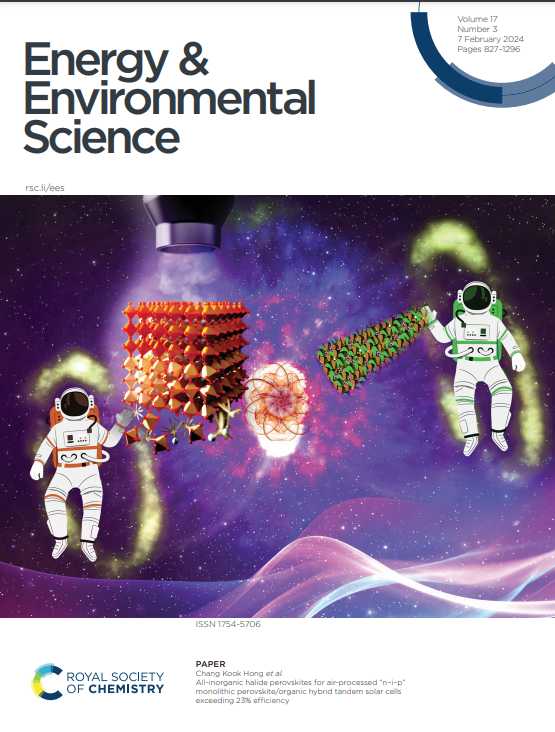Homogenizing SAMs deposition via seeding -OH groups for scalable fabrication of perovskite solar cells
IF 32.4
1区 材料科学
Q1 CHEMISTRY, MULTIDISCIPLINARY
引用次数: 0
Abstract
Self-assembled monolayers (SAMs) play the significant roles in the rapidly-progressed inverted perovskite solar cells (PSCs). Additional metal oxide or molecular incorporations are widely adopted to ameliorate their incomplete and uneven depositions on substrates, where the underlying binding situations between SAMs and substrates are vital for further optimizations but unclear. Here, we compare the bonding types between SAMs and metal oxides from a theoretical view, and conclude that SAMs preferably form the strong chemical bonds of -P-O-Sn via reacting with hydroxyl groups (-OH) on metal oxides for solid adsorptions. We further proposed the easy but effective strategy named seeding-OH groups via hydrogen peroxide(H2O2)/ultraviolet bath to strength and homogenize SAMs deposition on substrates, yielding the superior buried interface contact and high-quality perovskite films. Integrating the benefits, the resulted PSCs realized the champion efficiency of 26.19%, and 24.68% and 21.77% during their scalable fabrications with the areas of 1.21 and 13.8 cm2 (minimodules, active area), surpassing the bare ones with inferior scalability. Moreover, the large-area devices remained over 90% of their initial efficiency after ISOS-L-3 test for 1000 h.求助全文
约1分钟内获得全文
求助全文
来源期刊

Energy & Environmental Science
化学-工程:化工
CiteScore
50.50
自引率
2.20%
发文量
349
审稿时长
2.2 months
期刊介绍:
Energy & Environmental Science, a peer-reviewed scientific journal, publishes original research and review articles covering interdisciplinary topics in the (bio)chemical and (bio)physical sciences, as well as chemical engineering disciplines. Published monthly by the Royal Society of Chemistry (RSC), a not-for-profit publisher, Energy & Environmental Science is recognized as a leading journal. It boasts an impressive impact factor of 8.500 as of 2009, ranking 8th among 140 journals in the category "Chemistry, Multidisciplinary," second among 71 journals in "Energy & Fuels," second among 128 journals in "Engineering, Chemical," and first among 181 scientific journals in "Environmental Sciences."
Energy & Environmental Science publishes various types of articles, including Research Papers (original scientific work), Review Articles, Perspectives, and Minireviews (feature review-type articles of broad interest), Communications (original scientific work of an urgent nature), Opinions (personal, often speculative viewpoints or hypotheses on current topics), and Analysis Articles (in-depth examination of energy-related issues).
 求助内容:
求助内容: 应助结果提醒方式:
应助结果提醒方式:


